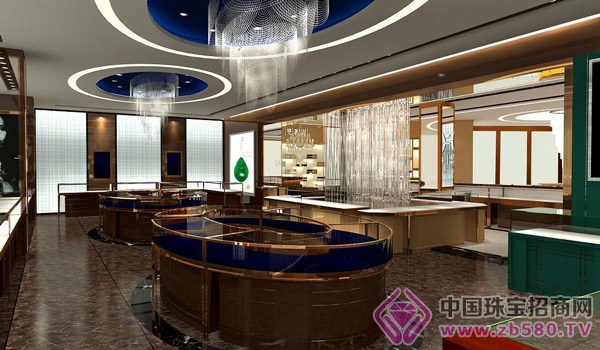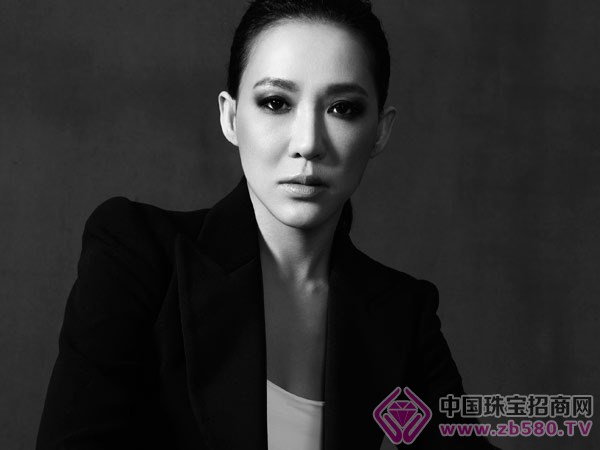On May 11th, it was the birthday of the famous surrealist artist Salvador Dali. On this day, a group of singular jewels designed by Dali swayed in the WeChat circle of friends. These seemingly eye-catching jewels are like DalÃ's paintings. DalÃ, which extends surrealism to sculpture, architecture, photography, drama, film, literature, and silverware, seems to inspire today’s architects, including Zaha Hadid. The coffee cafés extend the design crossover to interior design, furniture design, fashion design and other fields.

Dali's Nightmare Jewelry
"Wake up every morning, I am experiencing an extreme happiness, that is to become the happiness of Dali." The life of the artist Salvador Dali is full of legends and erroneous wildness. At the age of 24, he fell in love with his 10-year-old Gala, who had a husband, and announced his participation in the Surrealist paint camp. He angered his father as a notary and announced his cancellation of Dali’s inheritance. Dali did not show weakness, and he gave him a bag of semen to show that he was not owed.
Dali's paintings depict the absurd dreams of surrealism in his heart, full of metaphors and grotesque. Dali is also an outstanding jewellery designer. The jewels from his hand are like his paintings. It is a magnificent and gorgeous nightmare, full of jaw-dropping Dali temperament. What is even more surprising is that Dali has also carefully installed mechanical devices for these jewels. Their singular creeps make these jewels made of expensive gems and gold seem extremely strange and amazing.
When creating jewellery works, Dali is very concerned about the material of jewellery. He will personally select expensive materials such as gold, platinum, precious stones, pearls, etc., and think about the connotation and symbolic meaning of each material. His most famous "eye of time" is made of red sapphires and white gold and diamonds. The gradient blue eyes are the most Dali spirit dial with a huge tear in the corner of his eyes. Dali once took the eye mask with the "eye of the eye" and took the famous one-eyed photo. And the table of Dali's masterpiece "Eternal Memory" melts into his brooch design. The brooch is inlaid with gold and white gold and diamonds, full of strange style. Dalà created the "An Elephant in the Space" in 1953. In the crystal tower on the back of the elephant, there is also a Dali that melts the watch. Such as "Ruby lips and pearl teeth", "phone earrings", is also Dali's famous jewelry works.
Dali's jewellery is full of frightening imagination, resembling a dark magical fairy tale. Among the "immortal grapes" made by Dali in 1950, the grapes made of pearls and purple gems are a gimmick in the near future. The "Imperial Heart" is a crimson in the heart of a golden heart. The shocking thing is that this red heart beats like a human heart. The heart-shaped brooch is designed by Dalà for Gallas. He believes that only the most bizarre jewels can be worthy of his favorite woman, and Dali’s love for jewellery is also largely due to his fanaticism about Galla. . DalÃ's mechanical device, also used in the "fallen angel" to gently fan the two wings of the angel. It is worth mentioning that Dali's jewellery design manuscript is as gorgeous as his paintings.
Architects who also design cross-border jewelry and have a strong sense of space seem to be more unique. Zhang Ziyu and Wang Xixiu are two post-80s architects who created the infinite future 3D printed jewelry collection: necklaces, rings, pendants, bracelets, etc., all filled with complex and crazy spatial structures and distortions. The process is very modern, first adopts the building parameterized auxiliary design, produces in 3D printing, loses wax pouring, and then grinds and polishes by hand, and finally forms the three-dimensional texture of the outer bright inner sand. Due to the complicated shape, it is not possible to make an offset copy, and each piece is printed in 3D, which is difficult to be copied and copied. Architects like to explore the things behind the design, so these jewellery from their hands also shows the temperament of the words.

Architect's desk and chair
For architects, the difficulty of designing a seat is no less than that of a large building. From the three-dimensional dimension to the manufacturing process, we must consider it one by one. The tables and chairs from their hands, the brain hole is also very unusual: three-legged stools, bamboo weaves, dessert-like sofas... the tension of the space and the strange imagination, colliding with a unique form.
In the summer of 2014, when the architectural and urban designer Bu Bing opened the space of the coffee bar in the 1933 old venue of Xiangyang Road, Hongkou District, Shanghai, the first thing was to invite his architect friends to design furniture for this space. At that time, Bu Bing drew a picture for everyone, roughly divided the position like the urban design, and everyone started to design their own journey. Six months later, the architects took out their own works.
Surprisingly, these different styles of furniture are placed in the same space, but there is no sense of disobedience, but a piece of lively and surprising space, which looks like a wonderfully creative furniture exhibition. Bu Bing, who is the owner of the store, hopes that the space is like a laboratory and can coexist in multiple ways. Let the non-architectural public like it too, at least feel comfortable here. But after all, each architect's work is different, so when new furniture is added, Bu Bing will re-adjust their placement. In the design process, some architects changed positions, and some originally planned to design the entire set of furniture, and later became a single piece or even only one object.
“V-shaped chair†and “three-pronged couple†are the works of Shan Xiaoxiu Architects, the architect of Zhu Xiaofeng, who intends to express the connection between people, materials and structure through the tables and chairs. The “three-pronged†is a mutual-receiving wooden structure, which is made up of three triangles that cannot be independent of “half-tableâ€. The seat and back of the “V-chair†are all tree-shaped, and the legs are positive and negative. The three legs that make up the balance are completed by the cooperation of the human foot and the chair.
Special geometric form, smooth curved connection, such as a delicate sculpture, it is the associate professor of the Department of Architecture of Tongji University, the founding partner of Chuangmeng International Yuan Feng, the "edge wing chair" made by 3D printing. In the design of the chair, Yuan Feng extended the definition of architectural geometry to the human body, integrating the support, cushions, armrests and backrest of the seat into a continuous geometric surface, which is fascinating and fascinating.
The semi-circular armrests and backs, the cute shape, the color of the powder, the "sweet sofa" is the most lovely furniture in the space. The seat is ZAO/standard architecture standard founder Zhang Wei, inspired by the French macaron dessert, he hopes that this seat will bring comfort to people, but also add a lovely atmosphere to the party and space.
In addition, the space also gathered the “L Chair†designed by Liu Yichun, founding partner of Dashe Architectural Design Office; the “Urban Neon Chair†designed by Liu Xiaodu, the founding partner of URBANUS Urban Practice; Vice President of Architecture, Tongji University Director Zhang Ming and his wife designed the "reciting book" combination table and chair; Chen Haoru, associate professor of the School of Architecture of the China Academy of Art, used bamboo imitation silkworm cocoon to make the "bamboo chair"; the co-founder of the Arkimixing architectural design firm Zhuang Shen, in the space Set up a green space to place his "green space table stool"; GOA elephant design partner Wang Yan dedicated the unpretentious "Basic chair"; Wang Xinyu and Liu Wei from the studio designed a set of extremely narrow components "AA table stool"; and HHD_FUN hosted the architects Wang Zhenfei and Wang Luming's "infinite chair", inspired by the Cairo pentagon inlay; "the gathering chair" is the Chinese architecture [-8.43% fund research report] (10.19, -0.25, -2.39%) The work of Li Xinggang, the chief architect of the Design Institute, has a sense of space from the small houses in the Inner Mongolian grassland. Finally, the "seven chairs" of Bu Bing are indispensable.
Zaha's fashion crossover
Zaha Hadid is arguably the most successful female architect ever. But now Zaha, more than one architect can be summed up, her design tentacles have long been extended to interior design, product design, visual design... and she was a good businessman when she first studied mathematics. From the architectural point of view of fashion, with a stylish eye-catching building, the fashion crossover in the Zahado field, shows that an outstanding architect can design a lot of things across the border.
Zaha has left his own interior design in many famous spaces: Stuart Weitzman Hong Kong flagship store in 2014, Fudge hair salon in London, UK in 2012, Zaha Hadid Art Gallery in 2013, Zurich, Switzerland, influenced by constructivism in 2010 Gmurzynska Art Museum...
The work of the compositional painter Malevich, which originated in the Soviet Union in the 1920s, has had a profound impact on Zaha's design philosophy. Zaha's work shows the challenge of challenging traditional rules and boundaries and reconstructing architectural aesthetics, so she is more regarded as an artist among architects in the industry. The rapid changes in the style of the times have also made Zaha's architectural concept a savvy new technology. From deconstruction to futurism, her design is no longer a utopia on paper. In the first 15 years of Zaha's career, she was ridiculed as "Paper Architect" (there is no picture of the house). At one time, she also sold paintings, and of course the paintings were abstract.
In 2004, Zaha was fortunate to receive the Pritzker Prize, the highest award in the construction industry. At this point, the average person will be calm to be an architect, but Zaha has attacked all sides and extended the design to various fields: furniture, fashion goods, industrial products, art installations, 3D printing, she is very jealous. . Especially in the fashion world, Zaha walks closer and cooperates with many fashion brands, including designing art installations for Milan Design Week in 2011, designing handbags with Fendi, and designing shoes with Melissa brand for American musician Will. I.am's brand design smart watches and so on.
Zaha has cooperated with Lafayette Karl Lagerfeld several times to plan the MOBILE ART world tour for the 50th year of Chanel classic product 2.55; in 2008-2010, design exhibition container for Chanel Mobile Art. While mixing in the fashion world, Zaha also launched its own brand name ZHD, whose design products include small concept cars, furniture, tableware, etc. The style is as fresh and pioneer as her architectural works, full of visual impact.
Translucent Roller Blind Fabric
Translucent Roller Blind Fabric,Plain Roller Blind Fabric,Roller Blind Fabrics,Roller Blind Fabric 100% Blackout
Shaoxing Blue Surge Fashion Co.,Ltd. , https://www.blue-surge.com
![<?echo $_SERVER['SERVER_NAME'];?>](/template/twentyseventeen/skin/images/header.jpg)